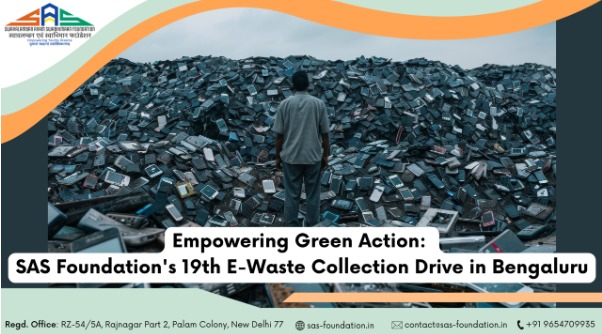E-Waste Recycling: The Silent Force Powering the Tech Revolution
In today’s rapidly evolving digital world, where devices get faster and smarter every year, one thing often gets overlooked—what happens to the gadgets we leave behind?
Old smartphones, cracked tablets, broken chargers, outdated laptops—millions of them are thrown away every day. But what if we told you that your discarded device holds the key to a more sustainable, high-tech future?
E-waste recycling, often happening behind the scenes, is not just about waste management. It’s quietly fueling the tech industry, recovering rare resources, and enabling innovation with a conscience. Let’s explore how this invisible engine of sustainability is reshaping our technological future—and how you can be a part of it.
📱 What is E-Waste?
E-waste, or electronic waste, refers to discarded electronic appliances such as:
- Smartphones
- Laptops and computers
- Televisions and monitors
- Chargers and cables
- Batteries
- Printers and scanners
- Household gadgets like toasters, mixers, and more
While these items may seem “useless” after they’ve stopped working or have been replaced by newer versions, the truth is—they’re packed with valuable materials.
💎 What’s Inside Matters: The Value of Discarded Devices
Every piece of e-waste contains a treasure trove of raw materials that the tech industry relies on:
- Gold and silver used in connectors and circuits
- Palladium in circuit boards
- Copper in wiring
- Rare earth elements like neodymium, lanthanum, and yttrium
- Plastic and glass that can be repurposed
Recycling e-waste allows these materials to be extracted and reused, drastically reducing the need for environmentally damaging mining operations. Just one ton of discarded smartphones contains more gold than a ton of gold ore.
That’s why e-waste is sometimes called “urban mining.”
⚙️ How E-Waste Powers Sustainable Innovation
Here’s how e-waste recycling is quietly powering the global tech ecosystem:
🔁 1. Circular Economy in Action
When rare metals and components are recovered from old devices and used in the production of new ones, we are embracing a circular economy—an economic system aimed at eliminating waste and continuously reusing resources.
Instead of the traditional “make-use-dispose” model, e-waste recycling supports a “reduce-reuse-recycle-rebuild” model, which is the future of sustainable manufacturing.
🌍 2. Reducing Environmental Damage
Mining rare metals is not only resource-intensive—it’s environmentally devastating. It involves deforestation, excessive water use, and pollution. Recycling e-waste reduces the need for new mining, helping conserve biodiversity and prevent habitat destruction.
📉 3. Lowering Carbon Emissions
Manufacturing from virgin materials is energy-intensive. Reusing materials from e-waste requires significantly less energy, thus lowering carbon footprints across supply chains.
💡 4. Driving Clean Tech and Green Jobs
Recycling hubs and e-waste management systems generate green employment opportunities—especially for youth and women. They also promote innovation in clean technologies, such as energy-efficient circuit boards and environmentally friendly materials.
🏭 The Hidden Crisis: Why We Must Act Now
Despite all the benefits, the world is facing a mounting e-waste crisis.
According to the Global E-Waste Monitor:
- Over 50 million metric tons of e-waste are generated globally each year.
- Only 17% of it is formally collected and properly recycled.
- The rest ends up in landfills, where toxic substances like lead, mercury, and cadmium leach into soil and water, affecting human and ecological health.
India, the third-largest generator of e-waste globally, recycles only a fraction of what it produces. Most e-waste is handled by informal sector workers in unsafe, unregulated environments.
This is not just an environmental issue—it’s a public health and economic opportunity challenge.
🌱 SAS Foundation’s Role: Turning Waste into Worth
At Swavalamban Avam Swabhimaan Foundation (SAS Foundation), we believe in turning awareness into action. Our e-waste recycling initiative is driven by a single goal:
To make every discarded device count—for the planet, for the economy, and for the future.
Here’s what we’re doing on the ground:
🔹 Awareness Drives
We organize school and college campaigns to educate students and parents about the importance of responsible e-waste disposal and how they can contribute.
🔹 Collection Campaigns
We set up safe and accessible drop-off points in communities where citizens can deposit their old devices without hassle.
🔹 Partnering with Certified Recyclers
We collaborate with authorized e-waste handlers to ensure proper dismantling, segregation, and recycling of materials—ensuring safety and compliance.
🔹 Skill Development
We offer training programs for youth in e-waste management, green jobs, and sustainability leadership.
👨👩👧👦 How You Can Contribute
You don’t have to be a tech wizard or environmental scientist to make a difference. Start with these simple steps:
✅ Don’t throw electronics in regular trash.
✅ Donate or recycle devices responsibly.
✅ Encourage your workplace/school to set up an e-waste bin.
✅ Support certified recyclers and collection drives.
✅ Educate your friends and family about e-waste.
Even one action, one recycled device, can set a powerful chain reaction in motion.
📰 Stay Informed, Stay Involved
Want to learn more about how technology, sustainability, and community action are coming together? Subscribe to the SAS Foundation newsletter to:
- Get exclusive stories on grassroots innovation
- Stay updated on upcoming recycling events
- Learn how to make your digital lifestyle greener
- Discover opportunities to volunteer and collaborate
Click [here] to subscribe and become part of a movement that’s redefining tech with heart and purpose.
✨ Final Thoughts: The Future Is Circular
Technology has always been about innovation—but today, the future of innovation depends on sustainability. E-waste recycling is no longer an option—it’s a necessity. And it’s a powerful reminder that what we throw away still holds value—for industries, for the planet, and for generations to come.
By taking responsibility for our discarded devices, we’re not just cleaning up—we’re creating the foundation for a better, more responsible digital world.
Let’s recycle. Let’s rebuild. Let’s rethink technology—together.
🌍💻♻️










